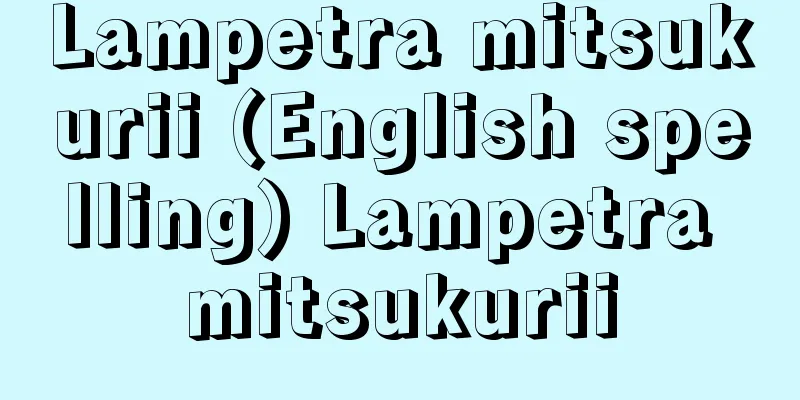Meiji University

|
It is a private institution. It originated as the Meiji Law School, which was opened in 1881 (Meiji 14) by three pioneers of modern law, Kishimoto Tatsuo (1851-1912), Miyagi Kozo (1852-1893), and Yashiro Misao (1852-1891), who returned from studying in France. In 1903 (Meiji 36), it was renamed Meiji University Specialist Department under the Specialized School Act, and in 1920 (Taisho 9), it became Meiji University under the University Act, with two faculties, Law and Commerce, a preparatory school, and later a Faculty of Political Science and Economics. In 1949 (Showa 24), it transitioned to a new university system and was re-launched with six faculties: Law, Commerce, Political Science and Economics, Literature, Engineering, and Agriculture. As of 2010, the university has nine faculties, including law, commerce, political science and economics, literature, science and technology, agriculture, business administration, information and communication, and international Japanese studies, as well as 13 graduate schools, including law, commerce, political science and economics, business administration, literature, science and technology, agriculture, governance, global business, accounting, legal affairs, information and communication, and liberal arts design, with over 30,000 students, making it one of Japan's largest comprehensive universities. As the school song suggests, "White clouds fluttering on Surugadai," the liberal arts faculties are concentrated in Kanda Surugadai, Chiyoda Ward, Tokyo, but some first and second year students are located in the Izumi campus in Suginami Ward, Tokyo, and the science and technology and agriculture faculties are located in Ikuta campus in Kawasaki City. The university has many unique features, including the Faculty of Law and Faculty of Commerce, which have been traditional since its founding, as well as the Faculty of Business Administration, the first private school to do so (established in 1953), and the Faculty of Letters, which has a strong faculty. The university celebrated its 100th anniversary in 1980. The Meiji University Junior College (Law Department, Economics Department), which was formerly the Meiji Women's College (Meiji University Women's Department, opened in 1929, later Meiji Women's College), has stopped accepting students since 2004. The university is located at 1-1 Kanda Surugadai, Chiyoda-ku, Tokyo (Surugadai Campus) and elsewhere. [Kitamura Kazuyuki] "Meiji University Centennial History: Historical Documents and General History," edited and published by Meiji University, 4 volumes (1986-1994) [Reference] | |Surugadai Campus. The photo shows the Liberty Tower (120th Anniversary Memorial Hall), a high-rise building with 23 floors above ground, 3 floors below ground, and a height of about 120m. It is a landmark of the Kanda Surugadai area. Chiyoda Ward, Tokyo ©Yutaka Sakano "> Meiji University School building in Surugadai, Kanda Ward (currently Kanda Surugadai, Chiyoda Ward, Tokyo). "Tokyo Prefecture Famous Places Illustrations" (1912, Meiji 45) National Diet Library Meiji University (Meiji period) Source: Shogakukan Encyclopedia Nipponica About Encyclopedia Nipponica Information | Legend |
|
私立。1881年(明治14)、フランス留学から帰った岸本辰雄(1851―1912)、宮城浩蔵(1852―1893)、矢代操(1852―1891)の3人の近代法学のパイオニアによって開校された明治法律学校を起源とする。1903年(明治36)専門学校令により明治大学専門部と改称、1920年(大正9)大学令により明治大学となり、法学、商学の2学部および予科、のちに政治経済学部を置いた。1949年(昭和24)新制大学に移行、法学、商学、政治経済学、文学、工学、農学の6学部をもって再発足した。2010年(平成22)時点で、法学、商学、政治経済学、文学、理工学、農学、経営学、情報コミュニケーション学、国際日本学の9学部と、法学、商学、政治経済学、経営学、文学、理工学、農学、ガバナンス、グローバル・ビジネス、会計専門職、法務、情報コミュニケーション、教養デザインの大学院13研究科を置き、学生数3万人余を擁する日本有数の大規模な総合大学となっている。校歌「白雲なびく駿河台(するがだい)」のとおり、文科系の専門学部は東京都千代田区神田(かんだ)駿河台に集中しているが、一部の1・2年次は都内杉並区の和泉(いずみ)校舎、理工・農学部は川崎市の生田(いくた)校舎に分かれている。創設以来の伝統をもつ法学部と商学部を中心として、私学で最初の経営学部(1953年設置)、充実した教授陣をもつ文学部など、多くの特徴をもつ。1980年に創立100周年を迎えた。なお、女子専門学校(1929年開設の明治大学女子部、のち明治女子専門学校)を前身とする明治大学短期大学(法律科、経済科)は2004年度から学生の募集を停止している。所在地は東京都千代田区神田駿河台1-1(駿河台校舎)ほか。 [喜多村和之] 『明治大学編・刊『明治大学百年史 史料編・通史』全4巻(1986~1994)』 [参照項目] | |駿河台キャンパス。写真は、地上23階・地下3階・高さ約120mの高層棟「リバティタワー(創立120周年記念館)」。神田駿河台地区のランドマークとなっている。東京都千代田区©Yutaka Sakano"> 明治大学 神田区駿河台(現在の東京都千代田区神田駿河台)の校舎。『東京府名勝図絵』(1912年〈明治45〉)国立国会図書館所蔵"> 明治大学(明治時代) 出典 小学館 日本大百科全書(ニッポニカ)日本大百科全書(ニッポニカ)について 情報 | 凡例 |
<<: Art of the Meiji and Taisho Periods
>>: Meiji Festival - Meiji-setsu
Recommend
Bedi
…In addition to traditional industries such as pr...
American War of Independence
The war in which the thirteen North American colon...
Euphorbia (English spelling) (Latin) Euphorbia
An annual or perennial plant of the Euphorbiaceae ...
Locomotive - Train
A rail vehicle used to pull passenger cars, freig...
Sayyid Muhammad
...A nationalistic rebellion that lasted for 21 y...
Key point - Kandokoro
A term used in Japanese music. It is also written ...
Big blowfly - Big blowfly
→ Black fly Source : Heibonsha Encyclopedia About ...
Upanayana (English spelling)
A Hindu religious and social ritual. It is an init...
Natsushima Shell Mound
This Jomon archaeological site is located in Nats...
Principality of Aydın - Aydın Kokoku (English spelling) Aydınoǧulları
A principality founded in western Anatolia by Turk...
AES (AES electron spectroscopy)
...When electrons are bombarded against a materia...
Planetary nebula
A red giant star ejects its outer layer in the fi...
Non-drinker
〘noun〙① In the ritsuryo system, one of the househo...
Pseudoelasticity
⇒Super elasticity Source: About Shogakukan Digital...
Cenozoic era
One of the major divisions of geological time, th...









